Questions Answered – Value of Block Planes
Question:
Hi Paul.
To go from very long planes to very short ones: I don’t think I’ve ever heard you mention a block plane. A cabinetmaker I know uses one as his first recourse, not just for trimming endgrain but for smoothing and shaping and a host of other things, in rather the same way as I think you favour your smoothing planes. Do you ever find yourself reaching for a block plane?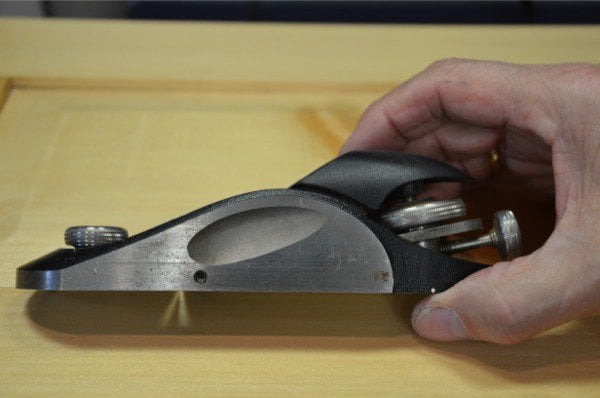
Answer:
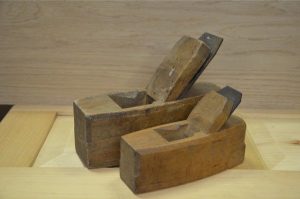
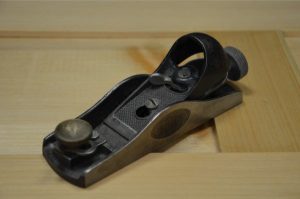
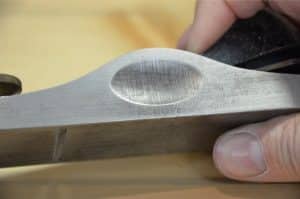
As soon as I say they have limited use value I get a tirade from users around the world defending these little wonders as indispensable and I can see that in some limited sphere they are invaluable. All too often these planes are bought by well-doers who liked the cuteness of them and there is a place for cute too. In reality here are some facts. Block planes are often referred to as low angle-planes which means they are bedded at a lower angle than say a normal bench plane. But bedding them at even 12-degrees doesn’t alter the angle of the top side of the cutting edge at any noticeable difference because combining a 30-degree bevel presents the combined cutting edge at 42-degrees, only 2 to 3-degrees different than the bevel down bench plane presentation. The lines on the side of the plane will help show what I mean. 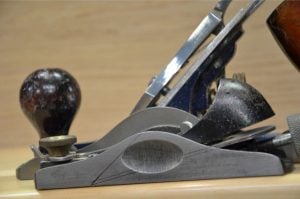

As you point out, your cabinet maker friend uses them for everything. I find it a little hard to believe anyone would use this plane type for smoothing and especially for smoothing long grain surfaces for which they are particularly bad not good.
I find block planes handy to have. I can work and live quite happily without them and if I never saw another in my life it would be OK. On some small work I find them better than the larger bench planes. I like the singlehanded use for removing the arris, trimming on shooting boards and such like that. I keep the Veritas apron plane on or near my bench and have found it tackles every block plane task perfectly.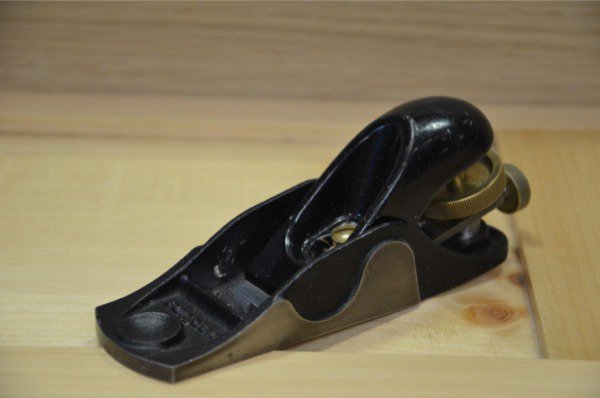
Pics to follow


Thanks for taking the time to answer. I’m sure I’m doing my cabinetmaker friend a disservice – he doesn’t use a block plane for everything, he just always has one at his elbow. I certainly find block planes comfortable to use, especially his Veritas one, which is nice and light but beyond my budget, unfortunately. The #4 I find quite uncomfortable in my hand – it feels cramped and awkward. I do have quite large hands. The #41/2 I find much more congenial.
I have yet to find any plane handle that fits my hand straight off and so I always end up filing them to suit with a rasp and then sanding them smooth. I just added some pictures to the blog and thanks so much for the question.
Paul,
I think some of the confusion over block planes develops as to whether they are being used for high end wood working or general carpentry. As a general carpentry tool, having a block plane on a building site is a good asset when small trimming and fitting work is required. Little, light weight and easy to carry and use, especially when one is climbing around rafters or working in awkward places, it also tucks nicely into a tool belt too.
In the shop though where more refined work is being done I would have to admit the No.4 certainly can accomplish the same tasks the block would do rendering it’s use unnecessary there. Your convincing argument has brought me into agreement on this but to have a plane with me on site that’s easy to bodily carry, and readily at hand, the block can and does serve a useful purpose. I have two older Stanley’s that trim beautifully.
Like many of these things I believe usage is, to use a made up word, situational. But then again, I’m a plain socks guy, so there you go.
Great input, Joe. Thanks for this.
Mr. Sellers,
I recall reading in your blog about you liking the Veritas Small Bevel-Up plane. I’ve always been interested in your reasons for using this plane, and how you’d incorporate it into your work in contrast to a #4. I figure since technically speaking it is a block plane with a tote 🙂 that this might be a good time to ask. Thanks, happy holidays!
First time post on any site ever. Please forgive me if i am stating the obvious, it has been a long day (5.00am start) and i am well into my second Adnams Broadside. As a joiner who occasionally ventures on site, having used electric tools to do the rough work, i find the block plane invaluable as a trimming plane whilst holding the work piece with one hand and the plane with the other. Fine tuning trim, adjusting doors (especially on the built in wardrobes i am currently installing which have hardwood frames with raised panels and the end grain of the door stiles has after taking the doors out my dry workshop extended past the rails having spent a couple of weeks in the bathroom of the big old house where they are to be fitted) adjusting miters on trim (where the mitre angle is not 45 deg…. most of the time on old houses), arris new door edges, sashes and new wood in repair work, trimming ‘glue on’ kitchen worktop edges after the bearing guided router bit etc etc.
Still carry a number 4 1/2 for removing electric planer marks, and an old record shoulder plane to gently adjust rebates etc.
Some of the guys i work with take the mickey asking whether i have a top hat instead of a hard hat and a brighlty coloured waist coat instead of a high vis jacket to comply with H&S…….or its a built in wardrobe not a f#~@*^? chippendale……..then they get in trouble…. with the downward belly gazing sidewards glance to the back drop of hand wringing i can predict the next sentence to be uttered…’errrr mate… i need a sharp chisel/hand plane/ i can’t get my electric plane/router/recip saw/multi master to fit/work’?
thanks for the great blog Paul aways provides me with interesting insights, thoughts and encouragement from a group of people who are for want of a better word, sound.
hhmmm…?
Paul, Once again I have to commend your courage to speak the truth from your experience knowing that it will conflict with mainstream views. While individual preferences differ in many matters you prove that a woodworker doesn’t need thousands of dollars or every tool in the catalog to accomplish very fine work. This message is very different from most blogs and the corporate sales sites who convince novices to spend beyond their means or delay in woodworking until they have all the tools they think they need. Your minimalist and practical approach gives hope and inspiration to many who don’t have the money to spend on unnecessary tools. Fair play to you sir, well done.
I share from 50 years standing at the bench and within two feet of the vise. I simply tell what I have seen through five decades and learned directly from men who saw two world wars each side of there woodworking over their five decades too. A century of woodworking knowledge has to be worth something. I don’t take sponsorships from anyone selling tools or equipment and partner with no other businesses so that I am free to give as unbiased an opinion as I can.
Personally teaching close to 6,000 students has made me work all the harder to make sure that my answers are as truthful as possible. It’s all quite simple really. This is my way of paving the way for woodworkers yet to be born to their craft.